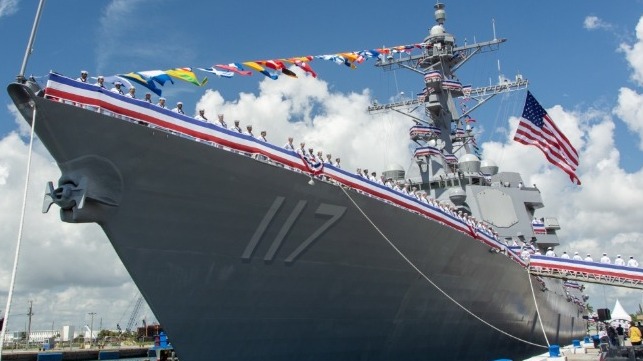U.S. Navy's Surface Fleet Surveys Indicate Decline in Readiness

As the U.S. Navy contemplates ways to enlarge its fleet and position itself for great power competition, it is still having challenges in maintaining the readiness of its existing hulls, according to the latest annual report from its Board of Inspection and Survey (INSURV).
INSURV is required to file an annual report to Congress on fleet readiness, and it released its FY2020 edition on Monday. The report is the result of 55 vessel inspections conducted across all vessel classes, including surface combatants, carriers, submarines and MSC fleet auxiliaries.
The data shows a clear declining trend for the Navy's surface combatant fleet, with falling average readiness scores over the course of 2017-2020. Last year, INSURV assessed 16 destroyers, three cruisers, one LCS, three amphibs and a mine countermeasures vessel; to approximate the surface fleet's readiness, it averaged the results and ranked 11 out of 21 key functional areas as "degraded," including propulsion, electrical, damage control and weapons systems.
INSURV also highlighted a concerning number of deficiencies aboard two newly-delivered vessels - the America-class amphib USS Tripoli (LHA 7) and the destroyer USS Paul Ignatius (DDG 117.)
In October 2019, the program office for the Ingalls-built America class had to obtain a waiver to conduct acceptance trials for USS Tripoli due to a "significant construction deficiency affecting the windlass system," according to INSURV. Inspectors identified 27 more deficiencies that "degraded a number of the ship's operational capabilities."

that matters most
Get the latest maritime news delivered to your inbox daily.
In addition, the Ingalls-built USS Paul Ignatius scored the lowest acceptance trial and final contract trial scores in the decades-long history of the Arleigh Burke-class destroyer program. The ship had "significant deficiencies affecting her ballistic missile defense capabilities, main battery gun, main propulsion systems and aviation hatch watertight integrity," INSURV reported, and recurring equipment casualties interfered with trials and demonstrations. She completed trials with "significant uncorrected deficiencies affecting her AN/SPY-1D radar."
INSURV noted that the next DDG built at Ingalls did far better, securing the best score since the program restarted in 2016.
